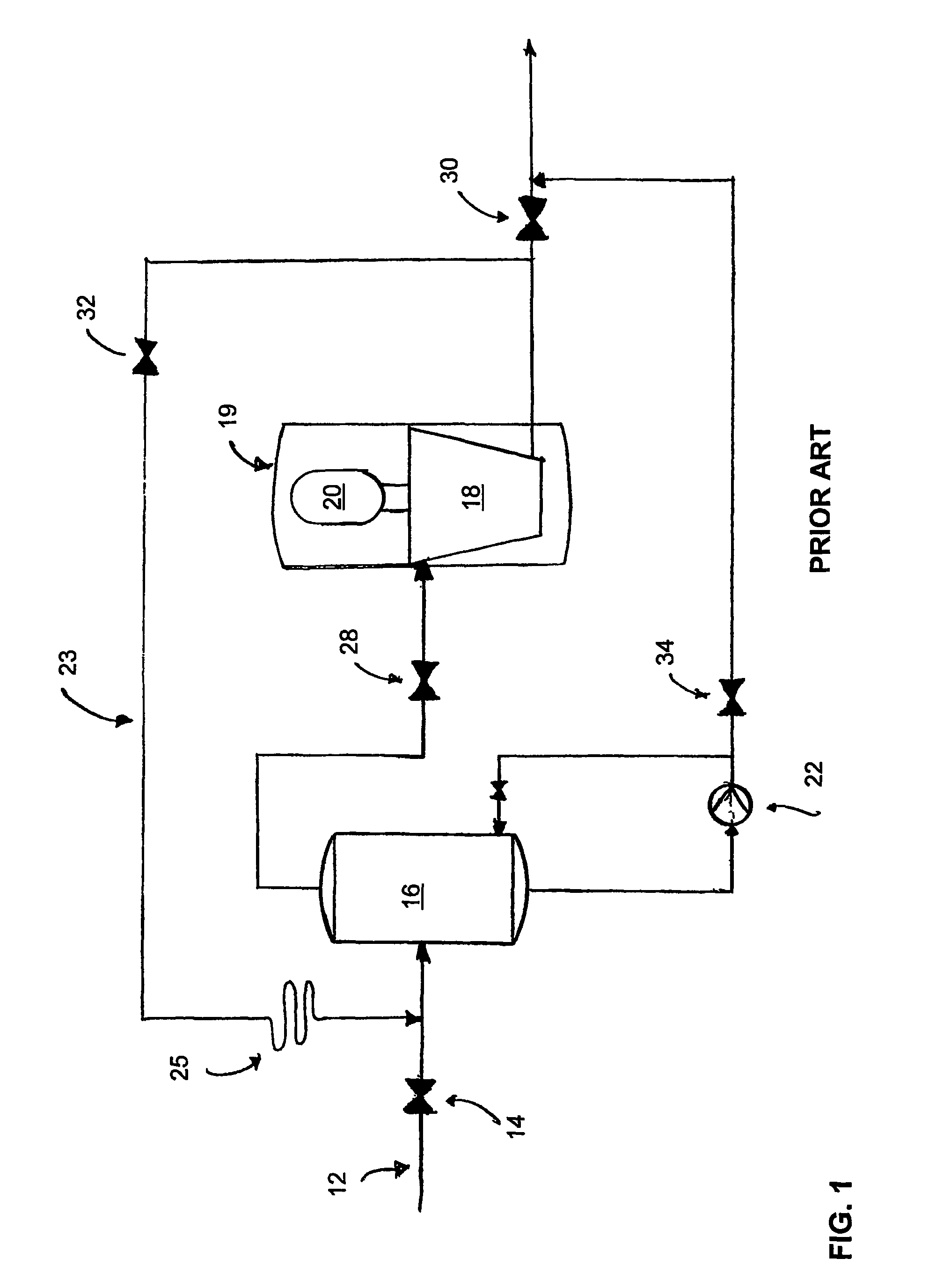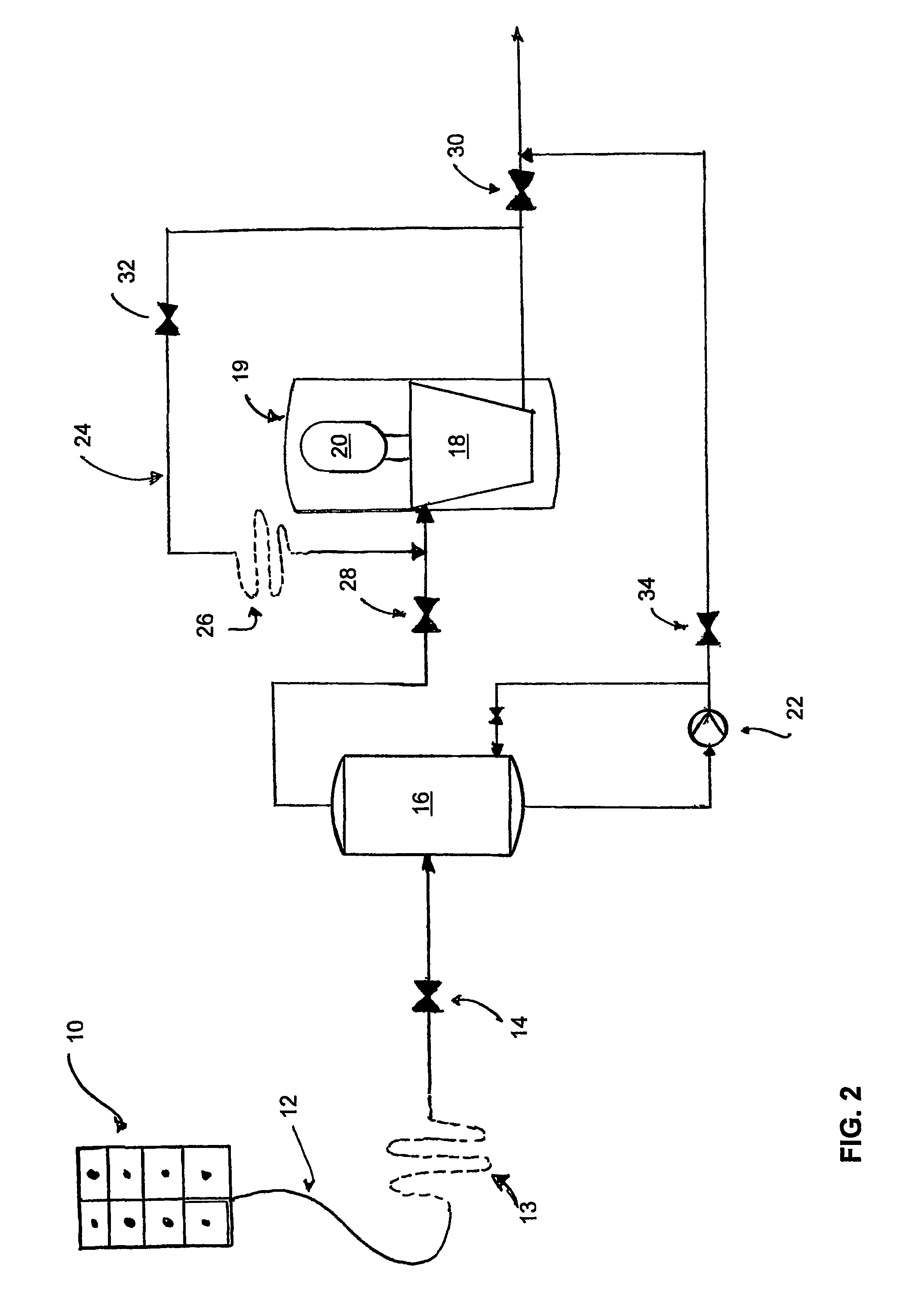Subsea compression system and method
- Summary
- Abstract
- Description
- Claims
- Application Information
AI Technical Summary
Benefits of technology
Problems solved by technology
Method used
Image
Examples
Embodiment Construction
[0037]Referring to FIG. 2, which illustrates one aspect of the invention, a subsea template or manifold 10 is schematically illustrated. The manifold may comprise a number of slots as well as a hydrate inhibitor injection unit, for injecting e.g. MEG or methanol into the well stream. The well stream is flowed in the flow line 12 to the subsea compression system. It is a basic requirement for the invention that the well stream is inhibited against the formation of hydrates as described, at a location upstream of the compression system, and before the well stream is being cooled down to a temperature at which hydrate formation may occur (typically about 25° C.). The injection of hydrate inhibitants also ensures that hydrates do not form along the flow lines to the distant onshore or offshore receiving facility.
[0038]By virtue of the long flow line 12 (e.g. 2 to 3 km) the well stream is cooled to a temperature that is equal to, or in the region of, the surrounding sea water temperature...
PUM
| Property | Measurement | Unit |
|---|---|---|
| Temperature | aaaaa | aaaaa |
| Temperature | aaaaa | aaaaa |
| Length | aaaaa | aaaaa |
Abstract
Description
Claims
Application Information
 Login to View More
Login to View More - R&D
- Intellectual Property
- Life Sciences
- Materials
- Tech Scout
- Unparalleled Data Quality
- Higher Quality Content
- 60% Fewer Hallucinations
Browse by: Latest US Patents, China's latest patents, Technical Efficacy Thesaurus, Application Domain, Technology Topic, Popular Technical Reports.
© 2025 PatSnap. All rights reserved.Legal|Privacy policy|Modern Slavery Act Transparency Statement|Sitemap|About US| Contact US: help@patsnap.com



